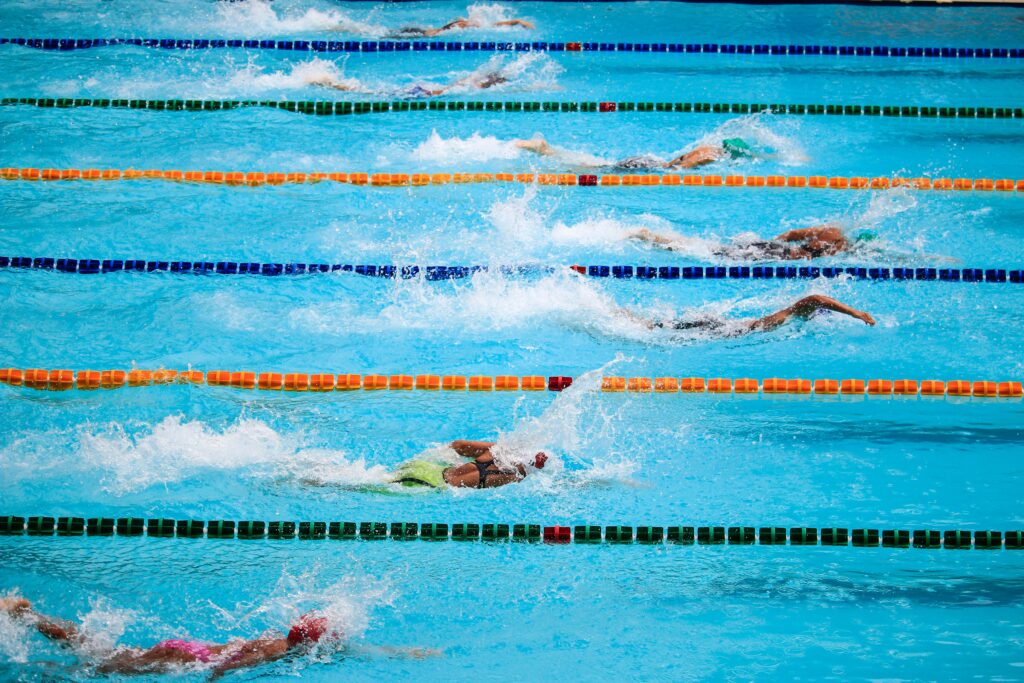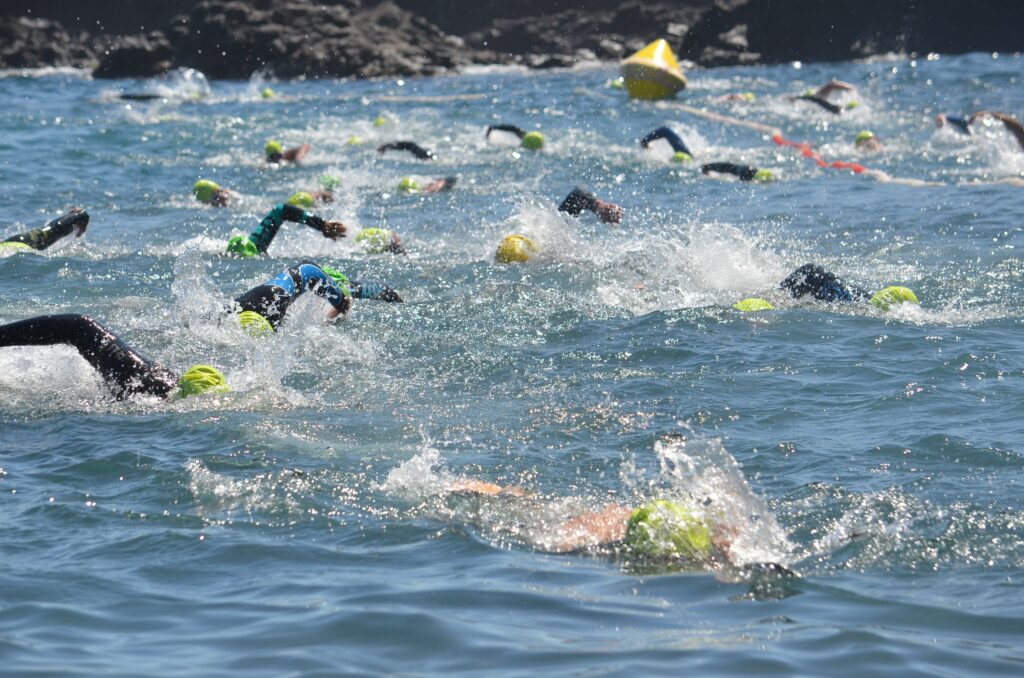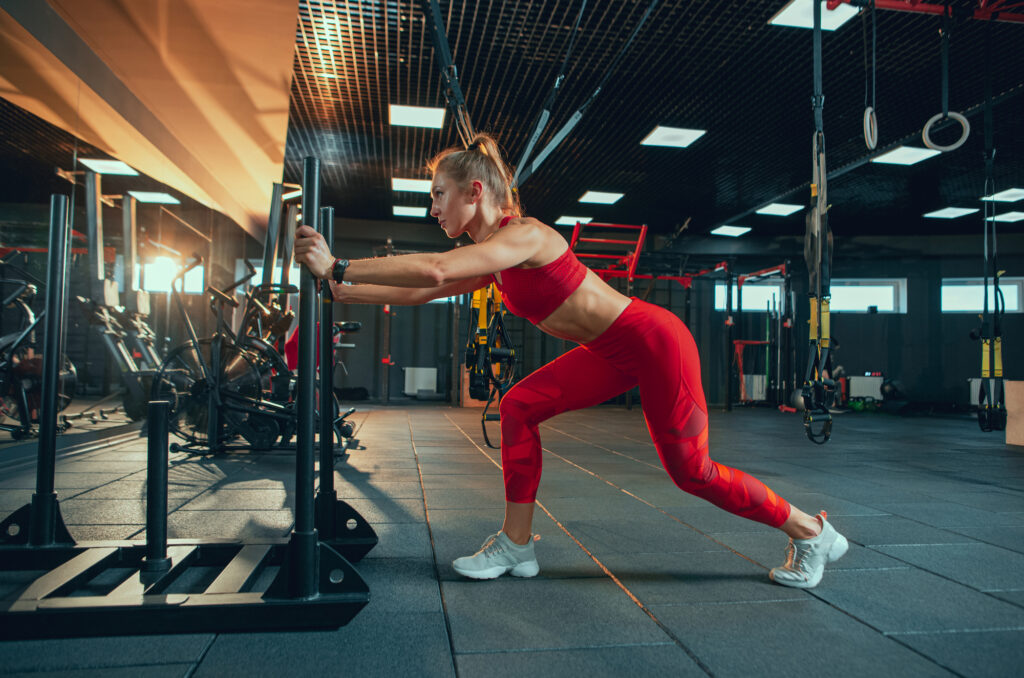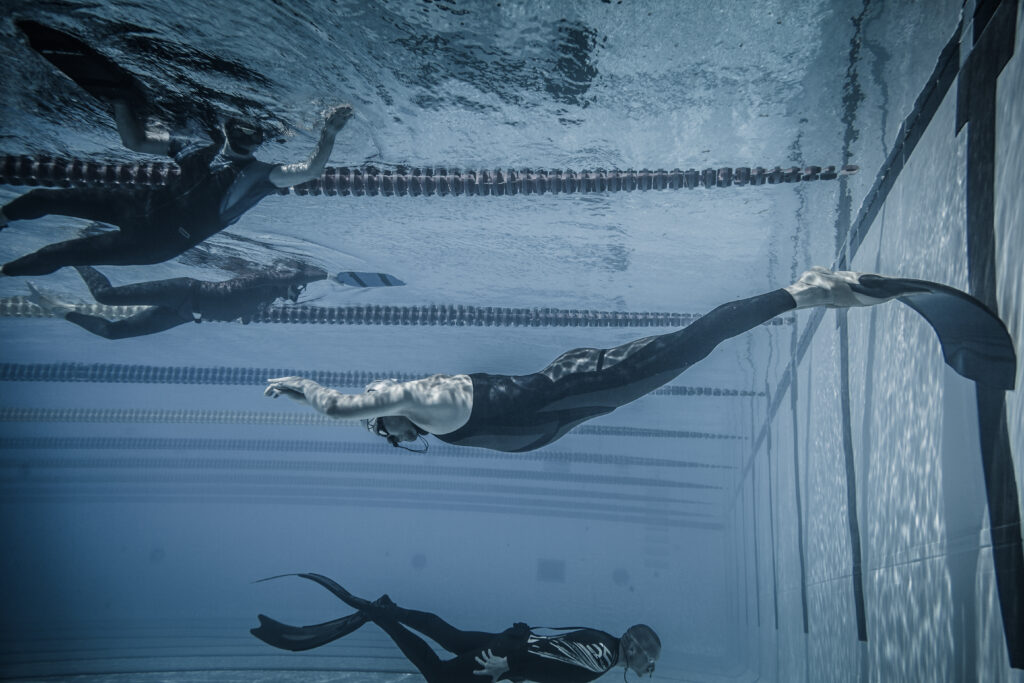Swimming is a great workout, but proper breathing can make all the difference in your performance and enjoyment. The 3-5-7 breathing pattern is a technique used by many swimmers to improve their endurance and breath control. This breathing pattern involves taking a breath every 3 strokes, then every 5 strokes, and finally every 7 strokes in freestyle swimming.
The 3-5-7 breathing technique helps swimmers build lung capacity and establish a consistent rhythm in the water. It also encourages bilateral breathing, which means breathing on both sides of the body. This balanced approach can prevent overuse of one side and lead to a more efficient stroke.
Swimmers who practise this pattern often find they can swim longer distances with less fatigue. The 3-5-7 breathing pattern can be incorporated into training routines to gradually build up breath control and stamina. As swimmers become more comfortable with this technique, they may notice improvements in their overall swimming performance.
Understanding the 3-5-7 Breathing Pattern
The 3-5-7 breathing pattern is a technique that helps swimmers improve their breath control and lung capacity. It involves alternating the number of strokes taken between breaths to enhance swimming efficiency and endurance.
Basics of Breathing in Swimming
Proper breathing is crucial for swimming performance. Swimmers need to maintain a steady rhythm of inhaling and exhaling to keep their oxygen levels up. The key is to exhale fully underwater and inhale quickly when turning to breathe.
Good breath control allows swimmers to stay relaxed and focused. It also helps them maintain proper body position in the water. Many beginners struggle with breathing, often lifting their heads too high or holding their breath too long.
Consistent breathing patterns are important for swimmers at all levels. Beginners often start by breathing every 3 strokes. As they improve, they can experiment with different patterns to suit their needs.
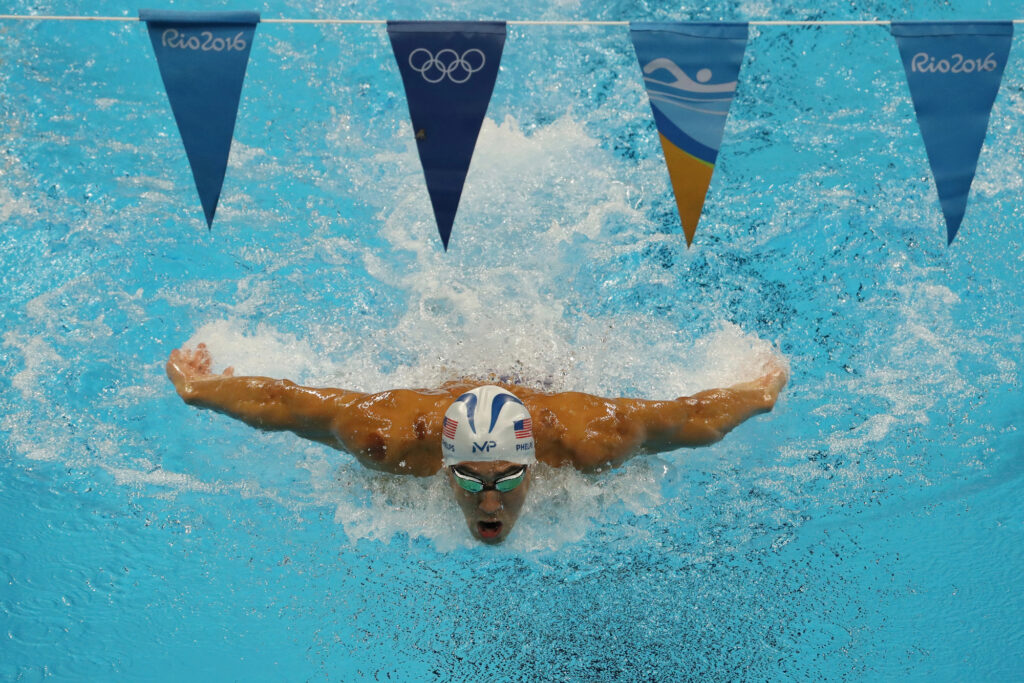
Detailed Explanation of the 3-5-7 Technique
The 3-5-7 technique involves breathing every 3 strokes, then 5 strokes, then 7 strokes, before repeating the cycle. This pattern challenges swimmers to hold their breath for longer periods, boosting lung capacity and endurance.
Here’s how it works:
- Breathe every 3 strokes for 25 metres
- Switch to every 5 strokes for the next 25 metres
- Breathe every 7 strokes for another 25 metres
- Return to breathing every 3 strokes
This drill can be incorporated into swim practice to improve breathing control. It’s especially useful for freestyle swimming but can be adapted for other strokes.
The 3-5-7 pattern helps swimmers develop a more efficient breathing rhythm. It teaches them to exhale steadily underwater and take quick, effective breaths when needed. This controlled breathing can lead to improved swim times and reduced fatigue.
The Benefits of Practising the 3-5-7 Breathing Pattern
The 3-5-7 breathing pattern offers swimmers several advantages. It helps enhance breath control, boosts stamina, and improves overall swimming performance.
Enhanced Breath Control and Lung Capacity
The 3-5-7 breathing technique helps swimmers build lung capacity. By varying the number of strokes between breaths, swimmers learn to hold their breath for longer periods.
This practice strengthens the respiratory muscles, allowing for deeper and more efficient breathing. As a result, swimmers can take in more oxygen with each breath.
The technique also promotes bilateral breathing. This balanced approach prevents overreliance on one side of the body, reducing the risk of muscle imbalances and improving overall swim technique.
Improved Oxygen Supply and Stamina
Regular practice of the 3-5-7 breathing pattern enhances a swimmer’s ability to deliver oxygen to working muscles. This improved oxygen supply leads to better endurance in the water.
As swimmers become more comfortable with longer breath-holding periods, they experience less fatigue during extended swim sessions. The increased lung capacity allows for more efficient gas exchange, reducing the build-up of lactic acid in muscles.
This enhanced stamina is particularly beneficial for long-distance swimmers and those participating in competitive events. It allows them to maintain a strong pace for longer durations without tiring as quickly.
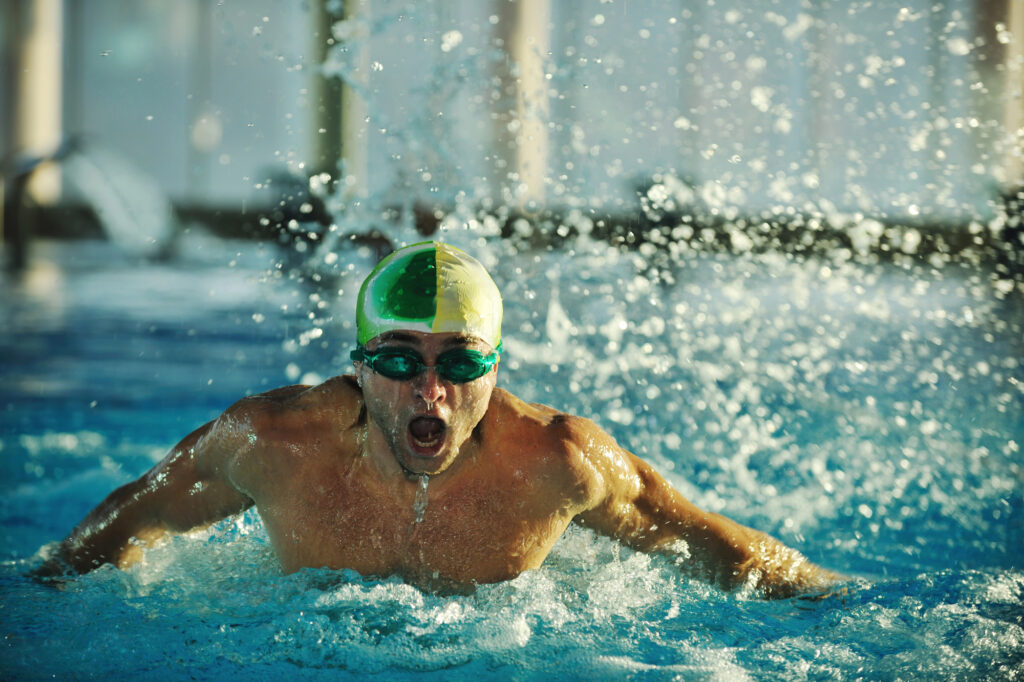
Boosted Swimming Efficiency and Speed
The 3-5-7 breathing pattern contributes to improved swimming efficiency. By reducing the frequency of breaths, swimmers can maintain a more streamlined position in the water for longer periods.
This streamlined position reduces drag and allows for smoother, faster swimming. The technique also helps swimmers develop a more consistent stroke rhythm, leading to better overall form.
As swimmers become more comfortable with the pattern, they can focus more on their stroke technique and less on breathing. This increased focus often results in improved speed and performance during races or training sessions.
Breathing Techniques in Freestyle Swimming
Proper breathing is key to efficient freestyle swimming. It helps maintain rhythm and balance while providing oxygen to fuel your muscles.
The Role of Bilateral and Unilateral Breathing
Bilateral breathing involves breathing on both sides, typically every three strokes. This technique helps swimmers stay balanced in the water and prevents overreliance on one side.
Unilateral breathing, on the other hand, means breathing only to one side. While it’s simpler, it can lead to an uneven stroke and body position.
Many coaches recommend bilateral breathing for freestyle to improve technique and prevent shoulder strain. It also allows swimmers to adapt to different race conditions.
Practising both methods can be beneficial. Unilateral breathing may be useful for sprints, while bilateral breathing is often preferred for longer distances.
Integrating the 3-5-7 Pattern into Freestyle
The 3-5-7 breathing pattern is an advanced technique used to improve lung capacity and stroke efficiency. Swimmers take a breath every 3 strokes, then every 5, then every 7, before repeating the cycle.
This pattern helps develop controlled breathing and increases carbon dioxide tolerance. It can enhance overall swimming performance and endurance.
To start, swimmers should master bilateral breathing every 3 strokes. Then, gradually increase to 5 and 7 strokes between breaths. It’s crucial to maintain proper form and avoid gasping for air.
Regular practice of the 3-5-7 pattern can lead to more efficient oxygen use and improved freestyle technique.
Executing the Technique: Step-by-Step Guide
The 3-5-7 breathing pattern requires practice and gradual progression. Swimmers can master this technique through specific exercises and drills before applying it to full swim sets.
Starting with Breath Control Exercises
Begin with dry land exercises to build lung capacity. Take deep breaths, holding for 5-10 seconds before exhaling slowly. Repeat this 10 times.
Next, try breath-holding exercises in shallow water. Submerge your face and hold your breath for increasing durations. Start with 10 seconds and work up to 30 seconds or more.
Controlled-frequency breath swimming can improve performance. Practice exhaling underwater through your nose and mouth to empty your lungs fully.
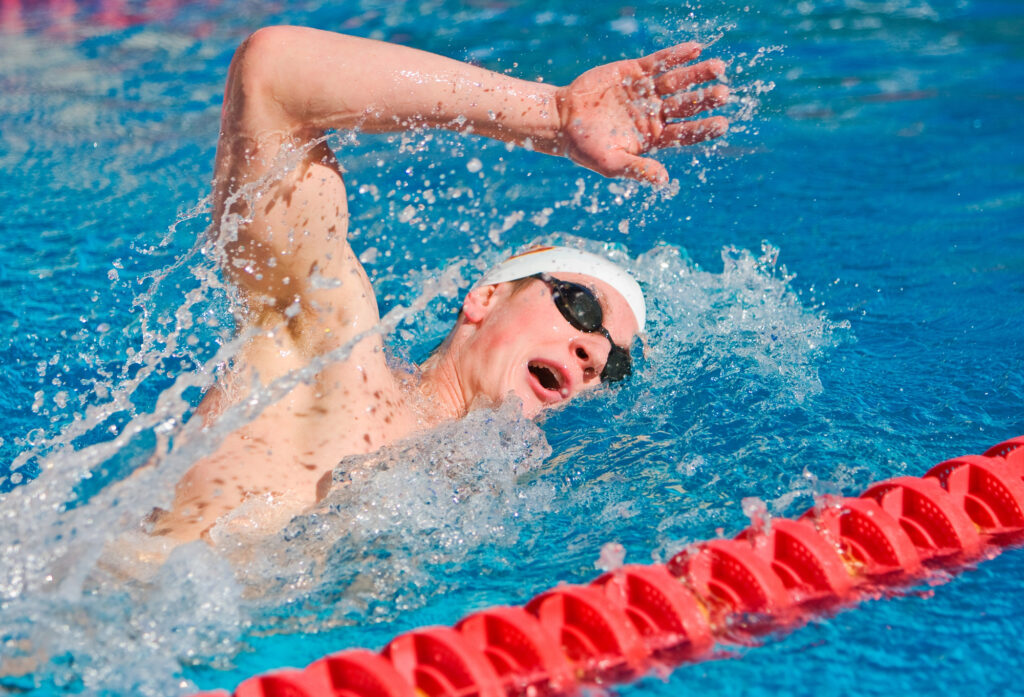
Progressing to Swimming Breathing Drills
Move on to swimming drills focusing on breath control. Start with freestyle breathing every 3 strokes. Count “1-2-3, breathe” as you swim.
Once comfortable, increase to breathing every 5 strokes. This helps build endurance and lung capacity.
Bilateral breathing is crucial for the 3-5-7 pattern. Practice breathing on both sides alternately.
Use a kickboard to focus solely on breathing technique. Kick with your face in the water, turning to breathe every 3, then 5, then 7 strokes.
Incorporating 3-5-7 into Swim Sets
Start with short distances, like 25-metre lengths. Breathe every 3 strokes for the first length, 5 for the second, and 7 for the third.
Gradually increase the distance as you become more comfortable. Try 50-metre or 100-metre sets using the 3-5-7 pattern.
Use pull buoys or paddles to focus on arm movement and breathing without worrying about leg kick.
Integrate the 3-5-7 pattern into your regular swim workouts. Start with one set per session and increase as your endurance improves.
Incorporating Body Rotation and Streamlining
Body rotation and streamlining are key elements of efficient swimming technique. These skills help swimmers move through the water with less resistance and greater speed.
Understanding the Importance of Full Body Rotation
Full body rotation is crucial for efficient swimming. It allows swimmers to generate more power and maintain proper form. When rotating, swimmers should turn their entire body, not just their shoulders. This movement starts from the hips and extends through the torso.
Proper rotation helps swimmers:
- Reach further with each stroke
- Reduce drag in the water
- Breathe more easily
To practise full rotation, swimmers can try the following drill:
- Push off the wall in a streamlined position
- Take one stroke, rotating fully to the side
- Hold this position for 3-5 seconds
- Take another stroke, rotating to the opposite side
Maintaining a Streamlined Position While Breathing
A streamlined position reduces water resistance and helps swimmers move faster. When breathing, it’s important to maintain this streamlined form as much as possible.
To keep a streamlined position while breathing:
- Turn the head to the side, keeping one eye in the water
- Avoid lifting the head out of the water
- Time the breath with body rotation
Swimmers can practise this technique by doing single-arm drills. These drills allow them to focus on proper body position and breathing without worrying about coordinating both arms.
Remember, the goal is to create as little disturbance in the water as possible. This helps maintain speed and efficiency throughout the swim.
Advanced Techniques and Training
Mastering advanced breathing techniques can significantly enhance swimming performance and endurance. These methods focus on controlled breathing, lung capacity development, and adapting to various swimming environments.
Breath Training for Competitive Swimming
Competitive swimmers often use 3-5-7 breathing patterns to boost lung capacity and stroke efficiency. This technique involves breathing every 3 strokes, then 5, then 7, in a repeating cycle. It helps swimmers maintain rhythm and adapt to different race conditions.
Another effective drill is bilateral breathing. Swimmers practise breathing on both sides, alternating every 3 strokes. This improves balance and reduces the risk of stroke imbalances.
Dry-land exercises can complement in-pool training. Diaphragmatic breathing exercises strengthen respiratory muscles. Yoga and meditation can also improve breath control and mental focus.
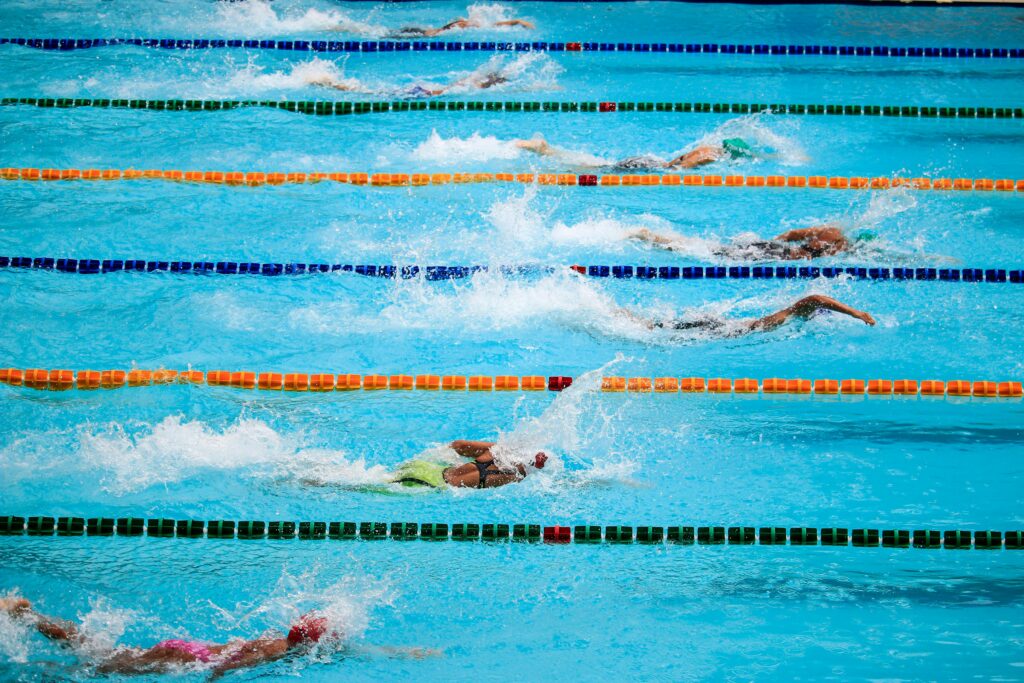
Utilising Hypoxic Sets within Interval Training
Hypoxic training involves controlled breath-holding to improve CO2 tolerance and oxygen efficiency. A common set is the ‘3-5-7 breathing pattern‘ during freestyle pull sets. Swimmers breathe every 3 strokes for 25 metres, then every 5 strokes, and finally every 7 strokes.
Coaches often incorporate hypoxic sets into interval training. For example:
- 8 x 50m freestyle, breathing every 5 strokes
- 4 x 100m IM, breathing every 7 strokes on freestyle lengths
It’s crucial to gradually increase the difficulty of hypoxic sets to prevent hyperventilation or dizziness. Swimmers should always have a spotter during these drills.
Open Water Swimming and Navigation Considerations
Open water swimming presents unique breathing challenges. Swimmers must adapt their technique to handle waves, currents, and limited visibility. Side-breathing becomes essential, allowing swimmers to lift their head just above the water surface.
Navigation requires frequent sighting, which affects breathing rhythm. A common technique is to sight every 6-10 strokes, taking a quick breath immediately after. This minimises disruption to the stroke cycle.
Breathing on both sides is particularly valuable in open water. It allows swimmers to breathe away from oncoming waves and adjust to changing conditions. Practising bilateral breathing in the pool prepares swimmers for open water challenges.
Conclusion
The 3-5-7 breathing pattern is a valuable tool for swimmers. It helps build lung capacity and improves overall technique.
This pattern involves breathing every 3, 5, and 7 strokes in rotation. It encourages bilateral breathing and prevents overuse of one side of the body.
Swimmers can incorporate this pattern into their training routine to boost stamina and endurance. It’s especially useful for front crawl breathing.
The key is to focus on a steady exhale underwater. This helps maintain a consistent breath cycle and promotes diaphragmatic breathing.
With practice, the 3-5-7 pattern can become second nature. It allows swimmers to adapt to different swimming conditions and distances.
Remember, proper breathing technique is crucial for efficient swimming. The 3-5-7 pattern is just one of many breathing techniques swimmers can use to improve their performance.
Frequently Asked Questions
The 3-5-7 breathing pattern is a technique swimmers use to improve their performance and lung capacity. It involves changing the number of strokes between breaths in a specific sequence.
Why might swimmers choose a 3-5-7 breathing technique?
Swimmers may opt for the 3-5-7 breathing technique to build lung capacity and improve rhythm. This pattern helps them avoid overusing one side of their body and develop bilateral breathing skills.
It also challenges swimmers to hold their breath for longer periods, which can boost endurance.
How does the 3-5-7 pattern enhance performance in swimming?
The 3-5-7 pattern can improve swim performance and muscle oxygen utilisation. By varying breath frequency, swimmers can maintain a steady pace and reduce fatigue.
This technique also helps swimmers adapt to different race conditions and distances.
What are the advantages of varied breathing rhythms like 3-5-7 in swimming?
Varied breathing rhythms prevent shallow breathing and promote relaxation. They help swimmers avoid tension and improve efficiency.
These patterns also strengthen core muscles and improve body rotation in the water.
Could you explain how to execute the 3-5-7 breathing sequence while swimming?
To execute the 3-5-7 sequence, take a breath every 3 strokes for 25 metres, then every 5 strokes for the next 25 metres, and finally every 7 strokes for another 25 metres.
Repeat this pattern throughout your swim, focusing on smooth exhalation underwater and quick inhalation when turning to breathe.
What are the differences between a 3-5-7 breathing pattern and other breathing techniques in swimming?
The 3-5-7 pattern differs from standard techniques like breathing every 2 or 3 strokes. It introduces variety and challenges swimmers to adapt to different breath-holding durations.
Unlike bilateral breathing, which alternates sides, 3-5-7 focuses on increasing the number of strokes between breaths.
How might a swimmer train to adopt the 3-5-7 breathing pattern?
Swimmers can start by practising with swimming aids like snorkels to focus on the breathing technique without worrying about arm movements.
Gradually introduce the pattern in shorter distances, then increase as comfort grows. Incorporate it into regular training sessions, starting with slower-paced swims and progressing to faster speeds.


